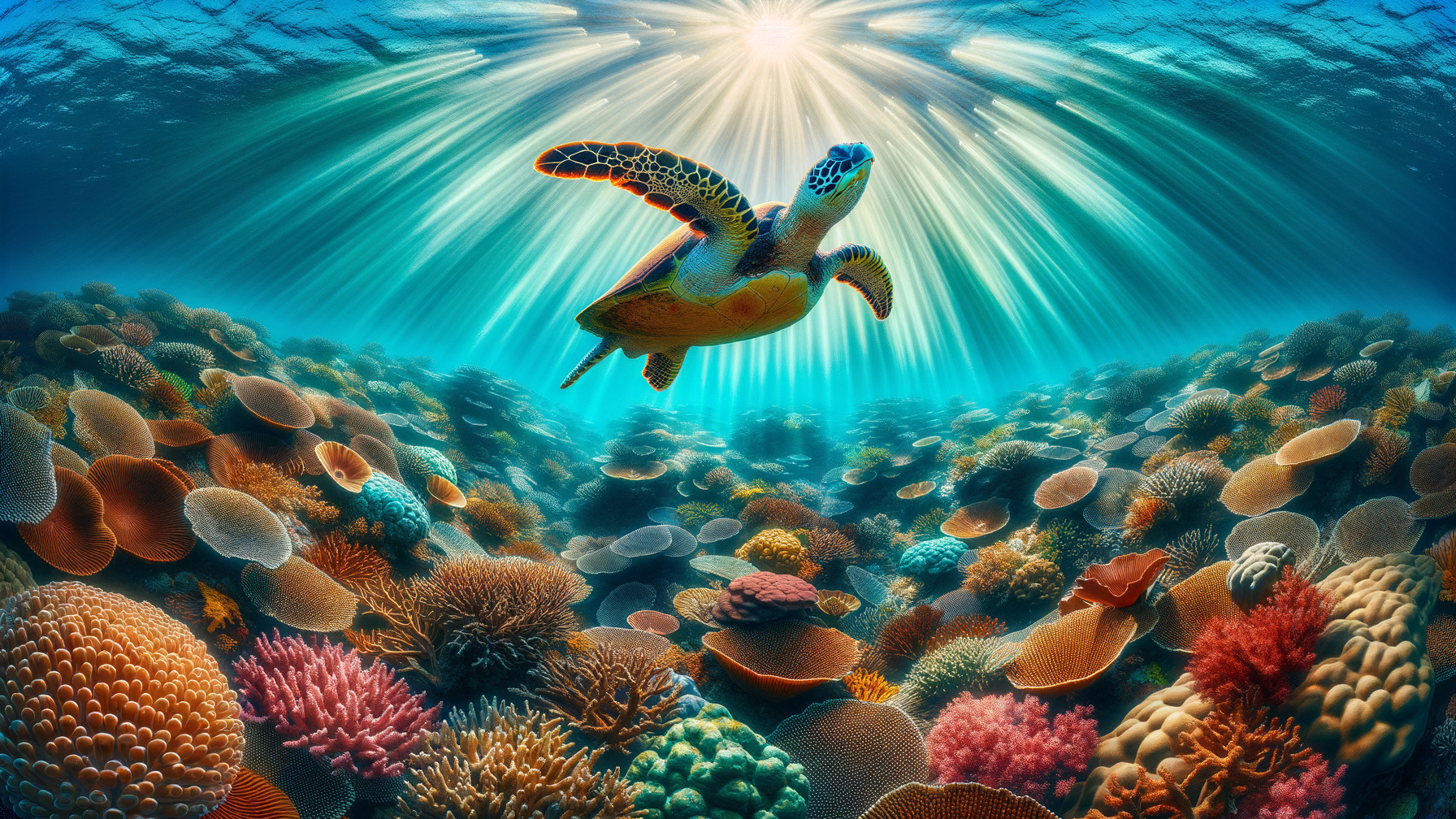Comments
Loading Dream Comments...
You must be logged in to write a comment - Log In

 Artist
Artist
**Hawksbill Turtle - Eretmochelys imbricata
Location: Found throughout tropical coral reefs in the Atlantic, Pacific, and Indian Oceans
Status: Critically Endangered - Fewer than 25,000 nesting females remain globally
Description & Behavior:
The Hawksbill Turtle is often called the “jewel of the sea,” and rightly so. Its amber-colored, intricately patterned shell - layered like stained glass - has captivated humans for centuries. But what once made it admired has now made it a target for extinction.
Named for its narrow, birdlike beak, the Hawksbill glides gracefully through warm coral reefs, using its sharp mouth to pry sponges, soft corals, and sea anemones from tight crevices. This feeding habit makes it a vital reef cleaner, preventing sponge overgrowth and allowing corals to thrive.
Each turtle becomes a living caretaker of its marine ecosystem - a quiet guardian ensuring balance beneath the waves.
Adults typically reach about 90 cm (3 ft) in shell length and weigh up to 70-80 kg (150-175 lb). Their carapace shimmers in shades of gold, brown, and amber - a natural masterpiece that, tragically, made them victims of the illegal tortoiseshell trade.
Threats:
Illegal Shell Trade: Hawksbill shells, known as “bekko” in Japan, have been used for centuries in jewelry and ornaments. Despite bans, black-market demand still exists.
Habitat Loss: Coral bleaching, reef destruction, and coastal development have stripped them of safe feeding grounds.
Bycatch: Accidental capture in fishing nets and longlines kills thousands annually.
Climate Change: Rising temperatures feminize hatchlings (as sex depends on sand temperature), threatening future male populations.
Egg Poaching: In some regions, eggs are collected for consumption or sale.
From millions of turtles once roaming tropical seas, now only a few tens of thousands remain - scattered, fragmented, and fighting to survive.
Conservation Efforts:
Across the globe, organizations such as the World Wide Fund for Nature (WWF) and Sea Turtle Conservancy are working tirelessly to protect nesting beaches and enforce anti-poaching laws.
Community-driven projects, particularly in Sri Lanka, Costa Rica, and the Seychelles, have turned local fishers into turtle guardians - protecting nests, relocating eggs to hatcheries, and ensuring baby turtles safely reach the ocean.
In Sri Lanka, Hawksbills nest along the southern and eastern coasts, including Kosgoda, Rekawa, and Pottuvil, where hatcheries play a vital role in ensuring their fragile survival.
Each hatchling that crawls toward the surf carries the story of a species reborn - a spark of hope glowing under moonlight.
2025 November 03